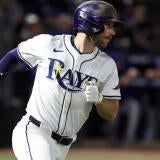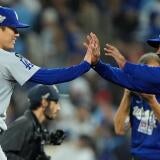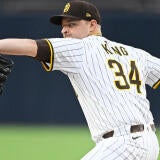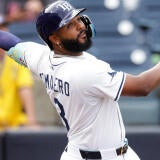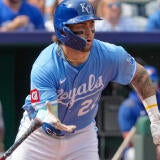2024 Fantasy Baseball Draft Prep: 56 revealing stats, presented with limited commentary
Sometimes the numbers say it all
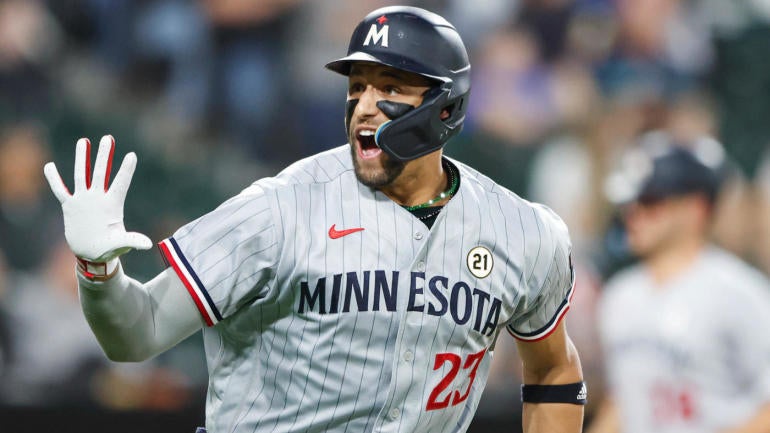
The case for or against any particular player is mostly a matter of numbers, and someone in my position is always looking for the most effective way to deliver those numbers. Usually, there are a lot of words in between, but maybe you don't have the time for all that. You don't want to hear the arguments, just the facts.
That's what I hope this article can serve as, basically a repository of my favorite figures for 2024. While not all of them perfectly sum up my feelings about the player in question, they should at least give you an inkling of how I view him.
I'll admit that some of these stats are more meaningful than others, but they're all interesting, if nothing else. I may even see fit to add some new ones as I uncover them in the weeks ahead, but this should be enough to get us started.
- For those who doubt that Ronald Acuna just had the best Fantasy season ever, note that he hit 13 more home runs than any other 70-steal guy in history and stole 27 more bases than any other 40-homer guy in history. Meanwhile, his 149 runs scored were the second-most for any player since 1949, and his .337 batting average would have led the majors three of the past five years.
- That .337 batting average for Acuna was actually a disappointment of sorts, according to Statcast, which by the batted-ball data suggests he actually should have hit .357. That xBA was 26 points better than No. 2 on the leaderboard, Luis Arraez. Statcast also has Acuna as the fourth-biggest underachiever -- yes, I said underachiever -- in xSLG.
- In hitting 41 homers and stealing 73 bases, Acuna became just the third ever 30-homer, 50-steal guy, joining Eric Davis (1987) and Barry Bonds (1990). And much more quietly, Bobby Witt came within a stolen base of becoming the fourth.
- On the subject of stolen bases, there were 3,503 across the majors last year, an increase of more than 40 percent from the year before. MLB had hoped its latest round of rule changes would return stolen bases to a level not seen since the early 2000s, but in actuality, 1987 was the last time there were so many. So virtually nobody reading this article was playing Fantasy Baseball at a time when stolen bases were as prevalent as they are now. It's a whole new world for us all.
- With a 3.86 ERA, Spencer Strider may seem like an odd choice to be the first starting pitcher drafted, but he had 44 more strikeouts and three more wins than any other pitcher, two advantages that seem like they could continue. Also, his ERA sat at 3.46 with five starts remaining last year.
- Like Strider, Freddy Peralta may seem like he's being overdrafted after putting together a 3.86 ERA, his highest in three seasons. But he cut down on the walks over his final 11 starts, which led to a 2.44 ERA, 0.85 WHIP and 13.2 K/9. His 16.6 percent swinging-strike rate during that stretch would have ranked second among qualifiers if it had lasted all season, behind only Strider.
- After batting .214 with a 31.6 percent strikeout rate in his 88 games with the White Sox, Jake Burger hit .303 with a 21.7 percent strikeout rate in his 53 games with the Marlins, making a conscious effort to tone down his swing. It didn't diminish his ability to impact the baseball. Of his 17 hardest-hit balls, 11 came with the Marlins.
- Brewers prospect Jackson Chourio, who's looking to win an opening day job soon after his 20th birthday, hit .283 with 22 homers, 44 steals, an .805 OPS and a 21.4 percent strikeout rate in a year spent mostly at Double-A. More specifically, it was the Southern League, which was tasked with having pitchers used pre-tacked baseballs for the first half of the year, suppressing offense considerably. For the second half of the year, when Chourio wasn't subjected to pre-tacked balls, he hit .324 with a .917 OPS and just a 13.4 percent strikeout rate.
- Andrew Abbott, who got the benefit of those tacky baseballs in the Southern League, looked like the real deal when he came up to the majors and delivered a 1.90 ERA in his first 10 starts. But between the high walk rate, the high fly-ball rate and the high hard-hit rate, trouble seemed to be on the horizon, and indeed, he delivered 6.42 ERA over his final 11 starts.
- C.J. Abrams' 47 stolen bases were the fifth-most in all the majors. He had only nine at the end of June before exploding for 38 over final three months.
- In a similar vein, Andres Gimenez had eight stolen bases in the first three months and then 22 in the final three. It could be just happenstance, but it's reason to wonder if two of the fastest players in baseball simply needed more time to get the hang of the new rules encouraging more stolen bases.
- Sean Murphy homered five times in a span of eight games heading into the All-Star break and then just four times total after the All-Star break. In all, he hit .306 with a .999 OPS in the first half and .159 with a .585 OPS in the second half.
- The biggest overachiever among starting pitchers, according to Statcast, was none other than NL Cy Young winner Blake Snell, who had a 2.25 ERA compared to a 3.71 xERA.
- If you're wondering what all the fuss over Elly De La Cruz is about, note that in his half-season of major-league duty, he delivered an exit velocity reading higher than all but two players, an average sprint speed higher than all but one player and the hardest-thrown ball by any infielder in Statcast history. He's the total package athletically, in other words.
- One other note about De La Cruz ... after a hot start, he went on to hit .200 (39 for 195) over the final two months, striking out 34.5 percent of the time, which has some people fearful of his downside. But he was still the 13th-best shortstop in 5x5 leagues and the 17th-best in points leagues during that time, thanks in large part to his 18 stolen bases.
- Nolan Jones broke through last year with 40 combined home runs and stolen bases, exactly 20 of each, but nearly half of them came in September, when he had seven homers and 12 steals. He also hit .349 (37 for 106) for the month.
- Xander Bogaerts, meanwhile, finished a home run and stolen base shy of his first ever 20/20 season, delivering a combined total of 38. More than a quarter of those (four homers, six steals) came in September, during which he hit .418 (43 for 103). Prior to that huge final month, his first season in San Diego was looking like a total dud, seeing him hit .258 with a .721 OPS.
- Mitch Keller's 4.21 ERA, 1.25 WHIP and 9.7 K/9 last year probably won't have you turning cartwheels, but in a year when blowup starts were common, he was more afflicted than most. If you took out the four starts in which he allowed seven earned runs or more, he'd have a 3.13 ERA, 1.14 WHIP and 10.1 K/9.
- Phillies rookie Cristopher Sanchez would have had the league's second-best ground-ball rate (57 percent) and fourth-best walk rate (4 percent) if he had the innings to qualify.
- Ryan Pepiot went from walking 4.4 per nine between the majors and minors in 2022 to 1.4 per nine in 2023. The latter would have ranked fourth among qualifiers last year. The former would have ranked third-to-last.
- You may remember something about Royce Lewis hitting four grand slams in the span of 18 games last season, but his power binge was even more impressive than that. Counting the postseason, he homered 15 times in his final 32 games.
- Two-thirds of Ke'Bryan Hayes' career-high 15 home runs came in the final two months, which corresponded with an increase in fly-ball rate (41.5 percent) and pull rate (30.8 percent). His career highs in those areas coming into the year were 30.8 percent and 27.0 percent, respectively.
- It's true Matt Olson had 54 home runs last season, but what played an even greater role in making him the No. 3 hitter in points leagues and No. 2 in Rotisserie was his 127 runs and 139 RBI. He became the second player since 2007 to exceed 125 in both categories, with 2022 Aaron Judge (the one who hit 62 homers) being the other.
- While Vladimir Guerrero disappointed with a .264 batting average and .444 slugging percentage, he was the fifth-biggest underachiever by xBA (.294) and the ninth-biggest underachiever by xSLG (.499), according to Statcast.
- Likewise, to whatever extent Fernando Tatis disappointed with a .257 batting average and .449 slugging percentage, it's softened by him being the 16th-biggest underachiever by xBA (.279) and the 12th-biggest by xSLG (.502).
- While Anthony Rizzo is coming off the worst season of his career, it didn't start out that way. The 34-year-old was batting. .304 with 11 homers and an .880 OPS when he suffered a concussion on May 28, one that a neurologist later said caused him "cognitive impairment." He hit .172 with one home run and a .496 OPS for two months before the post-concussion symptoms were revealed.
- It's easy to see the decline in Jose Abreu's numbers the past couple years, but his final line in 2023 is actually pretty impressive when you consider he had just one home run through 61 games. He hit 17 over his final 80 games, which, as you probably know, is roughly half a season.
- From May 11 through the end of his time at Triple-A Durham, a span of 72 games, Jonathan Aranda hit .375 with 23 homers and a 1.163 OPS. If you take his totals during that span and project them over 150 games, then it come out to 48 homers, 42 doubles, 142 RBI and 137 runs. Meanwhile, his 92.3 mph average exit velocity at Triple-A would have ranked among the top 20 in the majors.
- Much of the success Josh Jung had as a rookie came over the first two months, when he hit .295 with 12 homers and an .872 OPS in 52 games. The rest of the way, he hit .244 with 11 home runs and a .712 OPS in 70 games.
- Marcell Ozuna homered twice and drove in four runs on the final day of the season to finish with exactly 40 homers and 100 RBI. He hit .297 from May 1 on, but his April was so miserable, seeing him go 5 for 59, that it pulled his season mark down 25 points, to .274.
- You may not realize how much of Juan Soto's struggles the past two years (if you could even call them that) were a product of Petco Park, where he's a career .231 hitter with a .783 OPS. He was actually slightly better there last year, batting .240 with 12 homers and an .827 OPS, but his road numbers -- a .307 batting, 23 homers and 1.026 OPS -- look more like the Soto we remember. And now he's leaving Petco Park, the fifth-worst home run venue for lefties the past three years, for Yankee Stadium, the second-best.
- If you're wondering why the Padres made Michael King the crux of that Soto trade, it's because his eight-start trial as a starting pitcher late last year went as well as it possibly could have. The 28-year-old put together a 1.88 ERA, 1.10 WHIP and 11.3 K/9, with the highlight being a seven-inning, 13-strikeout effort against the Blue Jays on Sept. 20. His velocity basically held steady in his transition from the bullpen as well.
- If you see where Seiya Suzuki's final numbers ended up, you wouldn't believe he entered August batting .249 with eight homers and a .713 OPS. That's because, from that point forward, he hit .350 (65 for 186) with 12 homers and a 1.073 OPS, finally showing the ability that made him a star in Japan.
- You've heard about some of the hitters who underachieved, according to Statcast. How about an overachiever? Cody Bellinger's .307 batting average and .525 slugging percentage may overstate the extent of his rebound last year given that he was the ninth-biggest overachiever by xBA (.268) and the fifth-biggest by xSLG (.434).
- And TJ Friedl? Well, he managed to hit 18 home runs last year despite his 12th percentile average exit velocity and fifth percentile hard-hit rate, giving him the biggest differential between SLG (.467) and xSLG (.321) of any hitter by far. Playing half his games at Great American Ball Park, where he hit 13 of those 18 home runs, surely made a difference, but you didn't see it make that big of a difference for any other hitter.
- Kevin Gausman was a distant second to Spencer Strider in total strikeouts last year, but in terms of double-digit strikeout games, they were more alike than not. Strider had 11. Gausman had eight. Meanwhile, the No. 3 strikeout pitcher, Pablo Lopez, had only four, and the No. 4 strikeout pitcher, Blake Snell, had six, with five coming in a six-start span.
- Kyle Hurt worked two perfect innings in his lone major-league appearance last year. He retired Fernando Tatis, Juan Soto and Manny Machado in the first of those innings and struck out three batters swinging in the second. Working mostly as a starter in the minors last year, the 25-year-old had a 14.9 K/9 rate and 20 percent swinging-strike rate. It's unclear if his two-pitch arsenal will preclude him from working as a starter with the Dodgers, but that was once the fear for Spencer Strider, you may remember, who had a 14.6 K/9 rate and 21 percent swinging-strike rate in his final minor-league season.
- Meanwhile, Emmet Sheehan put together a 1.98 ERA, 073 WHIP and 15.8 K/9 in his final three major-league appearances (spanning 13 2/3 innings), including a 10-strikeout effort at Coors Field in the final week of the season. He had a 23 percent swinging-strike rate during that stretch, which might seem like a small-sample fluke except that he had a 20 percent swinging-strike rate during his first two months at Double-A, putting together a 1.86 ERA, 0.88 WHIP and 14.9 K/9.
- Erick Fedde is returning to the majors after winning Korea's equivalent of both the Cy Young and MVP last season, going 20-6 with a 2.00 ERA, 0.95 WHIP and 209 strikeouts in 180 1/3 innings. Even more impressive than those base numbers, though, is what changed under the hood. Fedde added a sweeper and split-change that White Sox pitching advisor Brian Bannister compared to Logan Webb's. While Webb led all the majors with a 62.1 percent ground-ball rate last year, Fedde's in Korea was 70 percent.
- Borrowing this one from our own Chris Towers, Eury Perez had a top-10 whiff rate on three different pitches -- the slider, curveball and changeup -- as a 20-year-old rookie last year. All were above 45 percent. Even one pitch with a whiff rate that high is usually a mark of greatness.
- While Joe Ryan's ERA finished at 4.51, it was really a tale of two seasons. In his first 15 starts, he had a 2.98 ERA. In his final 15, he had a 6.62 ERA, including an untenable home run rate of 3.2 per nine innings. It's true he was pitching through a groin injury part of that time, which may have impacted his mechanics, but even so, he had a 4.79 ERA in seven starts after returning from the IL.
- Prior to his move to the bullpen in mid-May, Nick Pivetta had a 63 percent strike rate, which was basically in line with the rest of his career. Afterward, he had a 66 percent strike rate, which actually improved to 67 percent once he transitioned back to a swingman/starter role in the second half, putting together a 3.30 ERA, 0.96 WHIP and 12.5 K/9.
- Wonder what it's like to play at Comerica Park, the single worst venue for home runs the past three years? Last year, Spencer Torkelson hit just 11 of his 31 homers there while Kerry Carpenter hit just six of his 20 home runs there.
- The knock on Kyle Harrison as a prospect was that he'd never throw enough strikes to get the most out of his swing-and-miss stuff, but in his seven major-league starts last year (and the three minor-league ones that preceded them), he did, landing 65 percent of his pitches for strikes as compared to 58 percent before then. An even more extreme example of this is the Athletics' Joe Boyle, who threw 66 percent of his pitches for strikes in three major-league starts after throwing 57 percent of his pitches for strikes in 25 minor-league starts.
- Dodgers acquisition Yoshinobu Yamamoto is the free agent from Japan getting all the hype right now -- and deservedly so -- but would you believe that Cubs acquisition Shota Imanaga actually ranked higher in Stuff+ during World Baseball Classic, when major-league balls were being used? In fact, Imanaga led every pitcher in the tournament in Stuff+, including those already in the majors.
- There may be upside to be found in Kenta Maeda still, particularly as he heads off to a pitcher's park in Detroit. His 10.9 K/9 last year ranked 12th among pitchers with at least 100 innings, and his 12.8 percent swinging-strike rate ranked 23rd. In 17 appearances after returning from a triceps injury last June, he put together a 3.36 ERA and 1.09 WHIP.
- If we're assuming left-hander Jose Alvarado is the new closer for the Phillies with Craig Kimbrel gone, then his 13.9 K/9 last year was highest of any projected closer this year (minimum 40 innings).
- Prospective closer Robert Stephenson, who signed a three-year deal with the Angels this offseason, put himself in the running with a 2.35 ERA, 0.68 WHIP and 14.1 K/9 after being traded to the Rays last June, but it gets even better than that. During that time with the Rays, opposing batters put the ball in play on just 49.3 percent of their swings, according to MLB Trade Rumors. Second-best during that time was Aroldis Chapman ... at 59 percent.
- To whatever degree you think Shane Bieber disappointed with 3.80 ERA, his xERA was way up at 4.83, making him the sixth-biggest overachiever by that standard.
- In what may serve to demonstrate how susceptible all classes of pitchers were to ERA volatility amid all the rule changes last year, the top four in xERA (minimum 400 balls in play) all underperformed that number by about half a run. Pablo Lopez's ERA was 3.67 rather than the estimated 3.00, Zach Eflin's was 3.50 rather than 3.02, Spencer Strider's was 3.86 rather than 3.09 and Zack Wheeler's was 3.61 rather than 3.18.
- After joining the Royals' rotation for good in August with a new slider that quickly emerged as his best swing-and-miss pitch, Cole Ragans put together a 2.70 ERA, 1.06 WHIP and 11.6 K/9 across 11 starts.
- Taking over as the Rangers' primary DH late last year, Mitch Garver hit .283 (50 for 177) with 14 homers and a .937 OPS from Aug. 1 on, making him the third-best catcher-eligible player in Fantasy during that stretch. He's expected to fill the same role for the Mariners this year.
- Prior to a month-long stint in the minors in which he shored up the command of his fastball and shape of his slider, Grayson Rodriguez had a 7.35 ERA in 10 starts, having thrown 62 percent of his pitches for strikes. Afterward, he had a 2.58 ERA in 13 starts, throwing 68 percent of his pitches for strikes.
- Though Randy Arozarena is still regarded as a Fantasy stud in most corners, he ended up placing behind Nick Castellanos in 5x5 categories leagues and behind Ian Happ in points leagues last year thanks to a second-half collapse that saw him hit .220 with a .700 OPS.
- For evidence of J.D. Martinez's return to form with the Dodgers last season, you need look no further than his 33 home runs and 103 RBI. But if you do look further, you'll see that he achieved those numbers in just 113 games, mostly because of time lost to injuries. HIs 162-game pace was 47 homers and 148 RBI.
- The same pitcher (minimum 80 innings) led the way in both xERA and FIP last year, and he did so by enormous margins. That pitcher would be Tarik Skubal, whose 2.28 xERA was 72 points better than the next-best and whose 2.00 FIP was 83 points better than the next-best.

